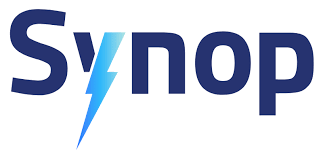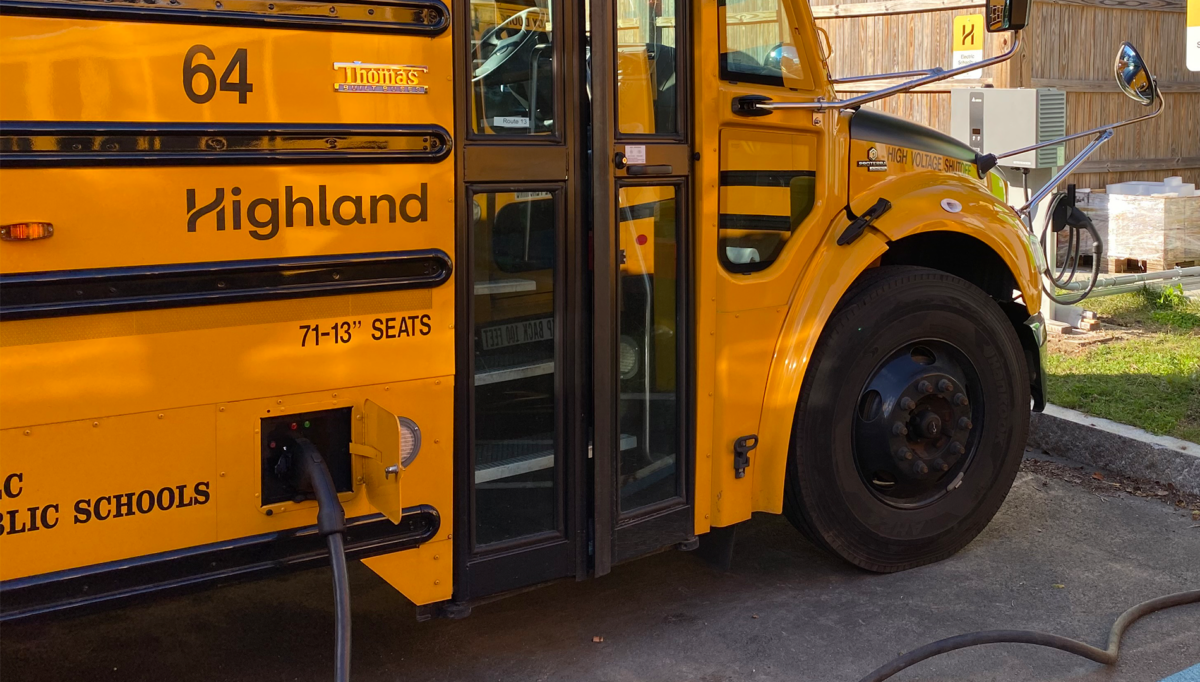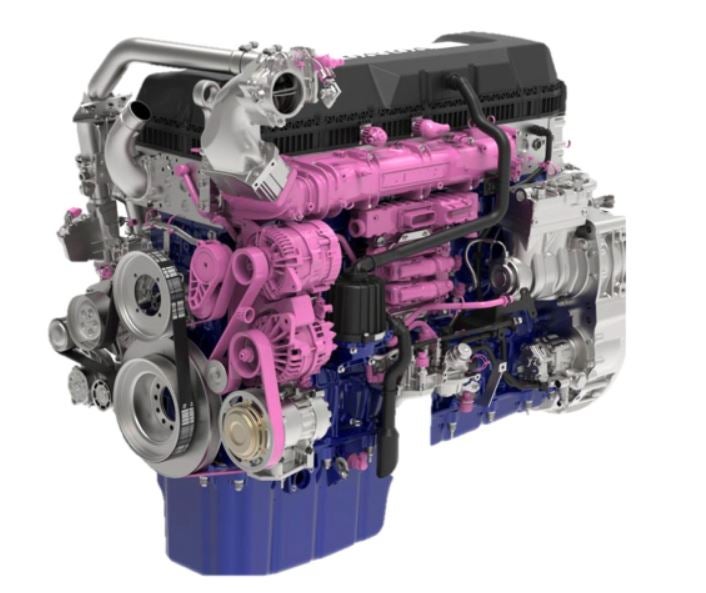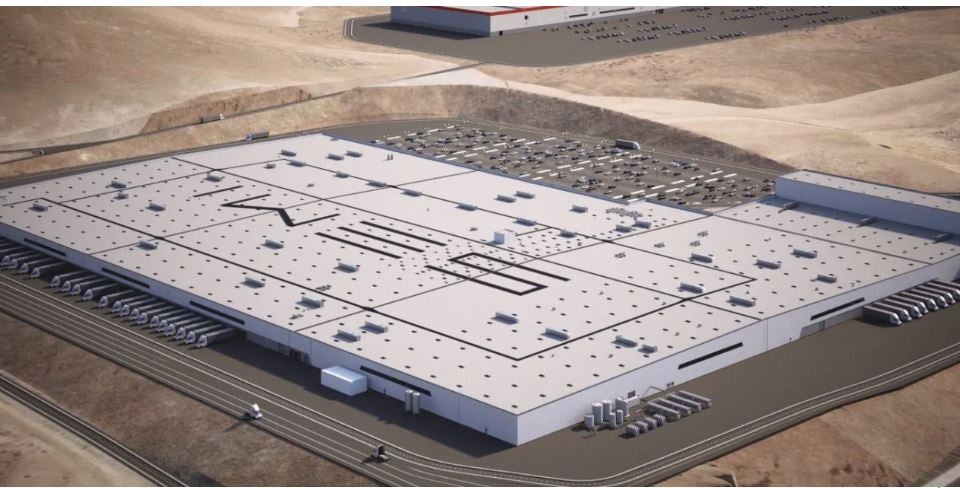When most fleets think about the electric grid, it’s about how much power they can get and when. Seed-stage startup Synop has another idea – making money by helping return unneeded power to utilities.

Giving back (electricity) as a business
When Gagan Dhillon worked for Volvo Trucks North America, he saw an opportunity to create a TMS for electric trucks. No one was interested. Then he and longtime friend Andrew Bledge, formerly an Amazon Web Services software engineer, looked into bidirectional charging – essentially sending unneeded electricity back to the grid.
The Department of Energy paid for Baltimore Gas & Electric in Maryland to let owners of three Ford F-150 Lightning pickup trucks participate in a proof-of-concept with solar provider Sunrun to discharge their trucks for backup home power.
Synop has bigger plans.
“We are telling an energy management-for-fleets story where you have all these big battery packs and these vehicles,” Dhillon told me. “How do you manage that energy? How do you pull energy from different sources that drain the grid, and then send that energy back to the grid?”

It’s complicated. But SaaS businesses like Synop find working with utilities easier than fleets trying to rush hardware-based grid interconnection for a charging site that can be slowed by bureaucracy and supply chain disruptions.
Wait! We can make money at this?
An aha moment came when Dhillon and Bledge learned utilities would pay to recover power much the way plasma operations dole out debit cards for life-giving blood fluids many people can function without.
“We’ve seen utilities offer up to $15,000 a year per vehicle that they can have access to for a vehicle-to-grid demand,” Dhillon told me. “Those are pretty substantial numbers if you multiply them across a fleet.”
A single TMS that included a way to offload excess energy was far more attractive to bus fleet operators than just managing their electric vehicles and chargers.
“Sometimes in life timing is everything. We were able to win some early key customers,” Dhillon said. Fleets get most of the payout for energy they return. Synop gets less than 5%.
Prologis on board
Customers include real estate giant Prologis that is deep into electrification. Forum Mobility, backed by Prologis rival CBRE Investment Management, is also on board.
“[Prologis is] building out massive charging depots across their footprint of warehouses. And they are building these big behind-the-fence [charging] hubs. There’s immense power there,” Dhillon said.
“They have a view into all of the charging that is available, the battery capacity that is available at these sites and eventually in Southern California, Northern California. They’re going to be able to discharge these vehicles at the optimal time, tap into that network and really turn this on for Class 8 use cases.”
Prologis endorses Synop on the Synop website.
“Scaling our charging-as-a-service offering for our customers incorporating electric vehicles has been made easier through Synop’s EV fleet and charging solutions,” said Henrik Holland, global head of Prologis Mobility. “Synop enables us to maximize uptime and minimize cost for our EV fleet customers.”
Taking the bus – so far
So far, Synop focuses on electric school buses from Daimler Truck North America’s Thomas Built Buses, Navistar’s IC Bus unit and Canada’s Lion Electric. Direct current fast-charging is a key. Level 2 charging at 240 volts is too slow.

In August 2022, electric school buses in Beverly, Massachusetts, returned energy to the grid for more than 80 hours. That offset demand on some of the summer’s hottest days.
Synop is targeting drayage, which has similarities to school bus transportation – same routes, same times – albeit with cargo instead of kids.
“We’ve got about 400 Class 8 electric trucks on the platform today. But that number is going to continue to grow,” Dhillon said.
Synop Series A round on the way
Synop is about 3 years old. It has raised about $15 million in seed funding. A Series A round is coming, but Dhillon declined to get into details. As a SaaS business, Synop’s cash needs are less acute than those of a hardware manufacturer.
Even with a first-mover advantage and being regarded as such by utilities, would Synop consider a merger instead of going it alone?
“That’s always something you have to think about,” Dhillon said. “We’ve seen those opportunities in the three years we’ve been in business. So far we’ve said no to them. But you never know what the future holds.”
The march to pricer decarbonized diesel engines
A trucking industry guessing game is in full swing. When will fleets start pulling ahead purchases to beat hefty price increases coming with 2027 Environmental Protection Agency emissions rules? Or have they already begun?
“Strong truck orders provide more evidence of prebuying ahead of 2027 emissions standards, likely extending overcapacity a while longer,” Tim Denoyer, ACT Research vice president and senior analyst, said in June.
Paccar CEO Preston Feight demurred on the OEM’s second-quarter earnings call July 23. “I think it depends on too many factors to weigh in on it,” he said.
Feight acknowledged that emissions-tightening regulations historically have affected buyer behavior. A 2027 EPA-compliant engine with a second selective catalyst reduction system could add $25,000 to $40,000 to the price of a new truck.
For fleets based in California, the California Air Resources Board’s Omnibus regulation mandates a 75% reduction in smog-forming nitrogen oxide emissions and a 50% reduction in particulate matter from heavy-duty on-road engines for the 2024-2026 engine model years compared to existing EPA standards.
Meeting the mandate
Paccar and Volvo Trucks North America recently announced variants of their big bore engines that will meet the Golden State requirements.
The Paccar MX-13 CARB engine for certain Kenworth and Peterbilt models uses a twin-canister selective catalytic reduction (SCR) aftertreatment and makes the most of emissions control systems.
Volvo’s CARB 24-compliant engine features an advanced emission control system. It is integrated with a linear exhaust aftertreatment system whose parts can be individually serviced or replaced. Volvo also incorporated a 48-volt alternator to supply power to a 48-volt battery that powers the heater during startup and low-load situations.

oxide emissions regulations for 2024-2026 engines. (Image: Volvo Trucks North America)
Navistar’s International S13 integrated powertrain features a dual-stage SCR as its primary NOx emissions reduction technology. It has no exhaust gas recirculation cooler on the engine, so 100% of the exhaust flows to the turbocharger during normal operating conditions. The result is less soot and particulate matter.
Briefly noted …
Tesla is showing a rendering of the plant in Nevada where it plans to build 50,000 Class 8 Semi electric trucks a year.

Daimler Truck has begun customer trials of its Mercedes-Benz GenH2 fuel cell trucks with Air Products and Amazon, among others.
Allison Transmission demonstrated the new Cummins X15N natural gas engine paired with its 4000 Series fully automatic transmission covering 50,000 miles of hauling bulk cement in California.
Hyliion has signed a nonbinding letter of intent to build a 200-kilowatt Karno generator at a U.S. Energy renewable natural gas fueling station.
German Tier 1 automotive supplier ZF Friedrichshafen AG is pulling back from electrification in its home county. It expects to cut 11,000 to 14,000 jobs by the end of 2028.
Truck Tech Episode No. 76: Zengistics brings peace of mind and tech-enabled efficiency to load management
Now is the time to use this discount offer for your Future of Freight Festival tickets in Chattanooga, Tennessee, this November.
Nominations for the FreightTech 25 are open until Sept. 6. Winners will be announced at F3.
That’s it for this week. Thanks for reading and watching. Click here to subscribe and get Truck Tech delivered to your email on Fridays. And catch the latest episodes of the Truck Tech podcast and video shorts on the FreightWaves YouTube channel. Send your feedback on Truck Tech to Alan Adler at aadler@firecrown.com.










